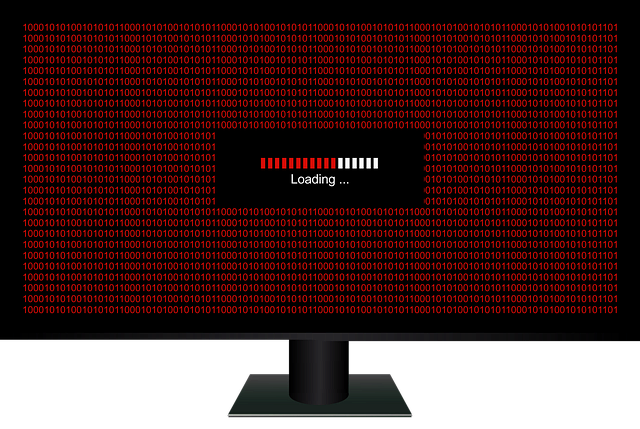Is Onedrivemasteragent.exe a Trojan horse? Does Onedrivemasteragent.exe harm your computer? Can Onedrivemasteragent.exe spread to other computers over a network?
Onedrivemasteragent.exe is the name of a Trojan horse. An executable process related to the Onedrivemasteragent.exe Trojan horse is involved in spreading it. That process might be hidden inside your operating system. Malware researchers have also revealed that the Trojan is related to toolbars that change settings in Internet browsers. The Onedrivemasteragent.exe Trojan got inside your machine without your permission and could try to steal credential data and personal information from your computer. Onedrivemasteragent.exe Trojan may also use a lot of resources such as power, video memory or CPU and GPU power, so it is in your best interest to remove it as fast as you can.

Threat Summary
| Name | Onedrivemasteragent.exe |
| Type | Trojan Horse, Miner Malware |
| Short Description | Onedrivemasteragent.exe is a Trojan horse that is probably put in your computer system via a similar malware on your computer system. |
| Symptoms | You may see a rise in the usage of your computer’s resources like CPU, RAM or GPU, while your computer will accordingly consume more electric power and may even overheat if a cryptocurrency miner is involved. Otherwise, there are barely any symptoms most of the time, other than a significant system slowdown or frequent system crashes. |
| Distribution Method | Freeware Installations, Bundled Packages, JavaScript |
| Detection Tool |
See If Your System Has Been Affected by malware
Download
Malware Removal Tool
|
| User Experience | Join Our Forum to Discuss Onedrivemasteragent.exe. |

Onedrivemasteragent.exe Trojan – How Does It Spread and What Damage Can It Do?
The Onedrivemasteragent.exe Trojan can be spread to the intended hosts via various techniques. One of the most popular ones in this case is the use of payload carriers. They can be any of the following:
- Documents — The hackers can construct infected malicious documents that can be of all popular file formats. In most cases when they are opened the users will be shown a prompt asking them to enable the built-in scripts. This will lead to the infection.
- Malware Software Installers — The hackers can also construct application setup packages that are of popular software which is often installed by end users. This can include system utilities, office and productivity apps, creativity suites and etc.
- Browser Hijackers — These are dangerous plugins made compatible with the most popular web browsers. They are uploaded to the extension stores using fake developer credentials and user reviews. The posted description will promise new features addition or performance enhancement.
- Automated Script Installation — In many ways the Onedrivemasteragent.exe Trojan can be integrated into browser windows and sites. This can include email messages and websites that utilize various social engineering and phishing tactics. They are frequently hosted on domain names that sound familiar to the users.
All of these files can be uploaded to file-sharing networks like BitTorrent where both legitimate and pirate data is shared among the community.
What’s particularly dangerous about these infections is that they can can have different consequences on the affected machines. In most cases the Trojan horse infection will be run following the typical behavior of connecting to a remote server and allowing the attackers to take over control of the infected computers. This is also used to steal files and deploy other threats.
The other common function attributed to the Onedrivemasteragent.exe Trojan infection is the launching of a cryptocurrency miner module. It is used to download a sequence of complex performance-heavy tasks. When they are run these small-sized tasks will place a heavy toll on the usability of the computers and particularly the CPU, memory, hard disk space and etc. For every completed and reported task the hackers will receive income in the form of cryptocurrency.
Depending on the actual hacker instructions the criminals can also launch a multitude of other possible modules. They can range from data harvesting to system manipulation and may prevent the users from accessing their data or using their computers.
Below you can see some useful tips that can help you to prevent similar Trojan malware from installing onto your PC, in the future:
- Run programs inside a sandbox environment
- Install an advanced anti-malware protection
- Update your mostly-used programs and software in general
- Update your OS with security updates
- Install an ad-blocker application
- Be wary around your e-mails and don’t open them unless you know the source
- Disable macros in Microsoft Office Applications
- Disable JavaScript
- Keep your firewall ON
Onedrivemasteragent.exe Trojan will probably try to extract as much information as possible based on its capabilities and try to propagate further on a network to access other devices. It is highly recommend that you remove the malware threat, because the Onedrivemasteragent.exe Trojan might also degrade your system’s lifespan by using lots of resources.

Remove Onedrivemasteragent.exe Trojan Completely
To remove Onedrivemasteragent.exe Trojan manually from your computer, follow the step-by-step removal tutorial written down below. In case this manual removal does not get rid of the miner malware completely, you should search for and remove any leftover items with an advanced anti-malware tool. Such software can keep your computer secure in the future.
Preparation before removing Onedrivemasteragent.exe.
Before starting the actual removal process, we recommend that you do the following preparation steps.
- Make sure you have these instructions always open and in front of your eyes.
- Do a backup of all of your files, even if they could be damaged. You should back up your data with a cloud backup solution and insure your files against any type of loss, even from the most severe threats.
- Be patient as this could take a while.
- Scan for Malware
- Fix Registries
- Remove Virus Files
Step 1: Scan for Onedrivemasteragent.exe with SpyHunter Anti-Malware Tool
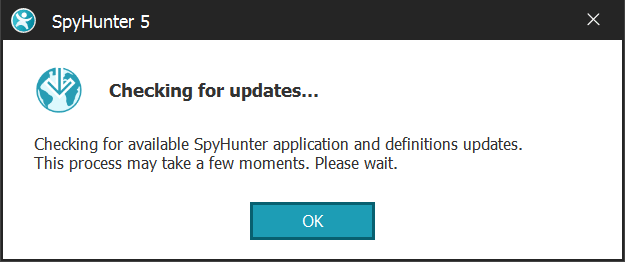

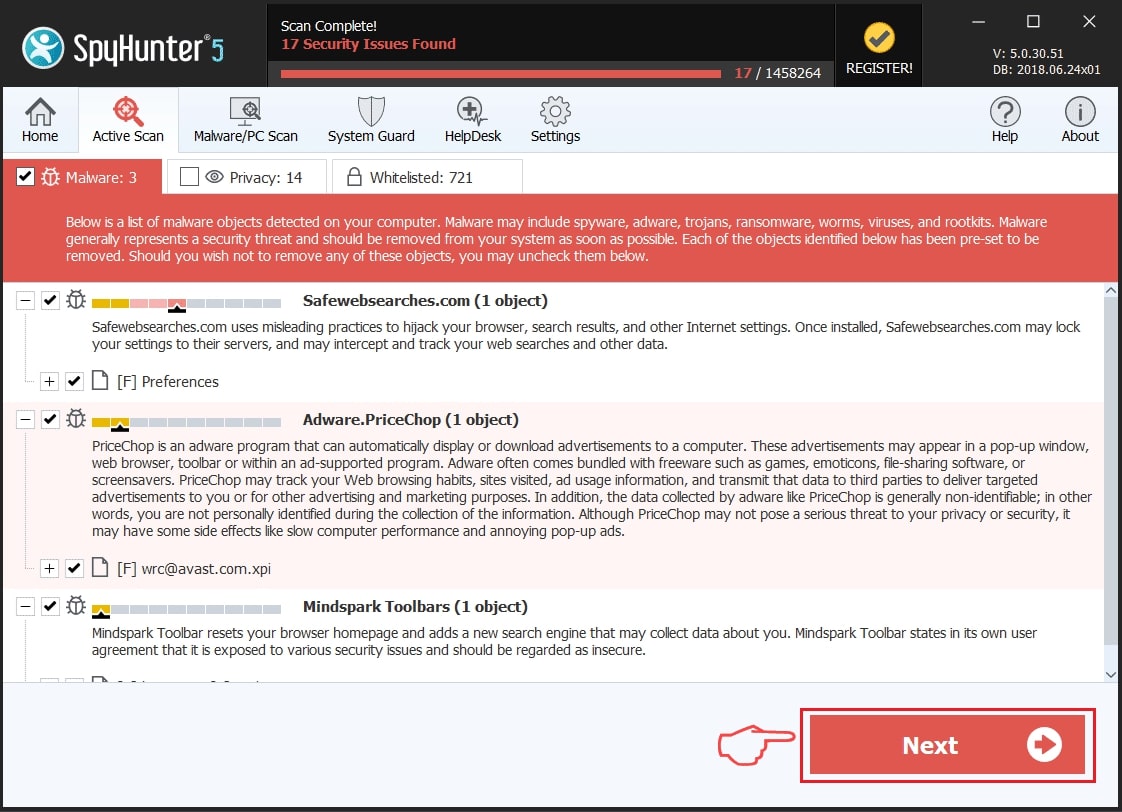
Step 2: Clean any registries, created by Onedrivemasteragent.exe on your computer.
The usually targeted registries of Windows machines are the following:
- HKEY_LOCAL_MACHINE\Software\Microsoft\Windows\CurrentVersion\Run
- HKEY_CURRENT_USER\Software\Microsoft\Windows\CurrentVersion\Run
- HKEY_LOCAL_MACHINE\Software\Microsoft\Windows\CurrentVersion\RunOnce
- HKEY_CURRENT_USER\Software\Microsoft\Windows\CurrentVersion\RunOnce
You can access them by opening the Windows registry editor and deleting any values, created by Onedrivemasteragent.exe there. This can happen by following the steps underneath:


 Tip: To find a virus-created value, you can right-click on it and click "Modify" to see which file it is set to run. If this is the virus file location, remove the value.
Tip: To find a virus-created value, you can right-click on it and click "Modify" to see which file it is set to run. If this is the virus file location, remove the value.Step 3: Find virus files created by Onedrivemasteragent.exe on your PC.
1.For Windows 8, 8.1 and 10.
For Newer Windows Operating Systems
1: On your keyboard press + R and write explorer.exe in the Run text box and then click on the Ok button.
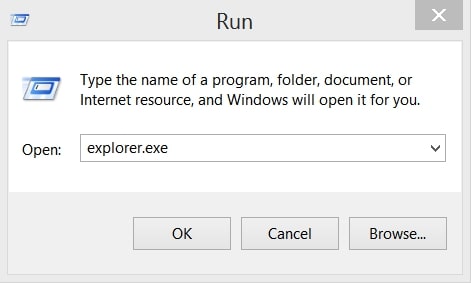
2: Click on your PC from the quick access bar. This is usually an icon with a monitor and its name is either “My Computer”, “My PC” or “This PC” or whatever you have named it.
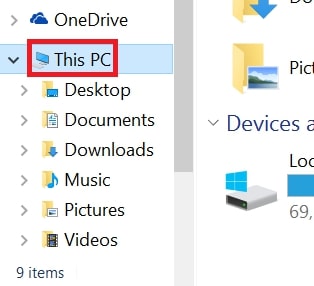
3: Navigate to the search box in the top-right of your PC's screen and type “fileextension:” and after which type the file extension. If you are looking for malicious executables, an example may be "fileextension:exe". After doing that, leave a space and type the file name you believe the malware has created. Here is how it may appear if your file has been found:
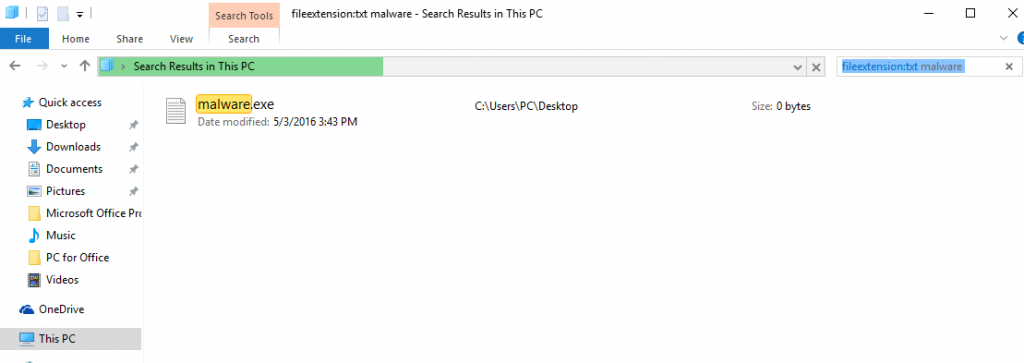
N.B. We recommend to wait for the green loading bar in the navigation box to fill up in case the PC is looking for the file and hasn't found it yet.
2.For Windows XP, Vista, and 7.
For Older Windows Operating Systems
In older Windows OS's the conventional approach should be the effective one:
1: Click on the Start Menu icon (usually on your bottom-left) and then choose the Search preference.
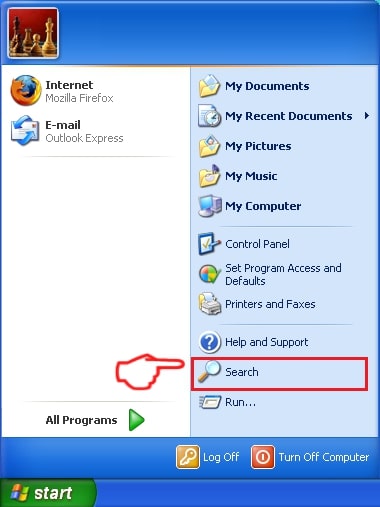
2: After the search window appears, choose More Advanced Options from the search assistant box. Another way is by clicking on All Files and Folders.
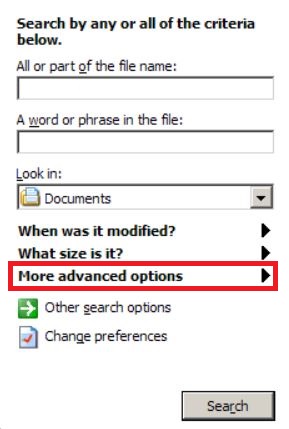
3: After that type the name of the file you are looking for and click on the Search button. This might take some time after which results will appear. If you have found the malicious file, you may copy or open its location by right-clicking on it.
Now you should be able to discover any file on Windows as long as it is on your hard drive and is not concealed via special software.
Onedrivemasteragent.exe FAQ
What Does Onedrivemasteragent.exe Trojan Do?
The Onedrivemasteragent.exe Trojan is a malicious computer program designed to disrupt, damage, or gain unauthorized access to a computer system. It can be used to steal sensitive data, gain control over a system, or launch other malicious activities.
Can Trojans Steal Passwords?
Yes, Trojans, like Onedrivemasteragent.exe, can steal passwords. These malicious programs are designed to gain access to a user's computer, spy on victims and steal sensitive information such as banking details and passwords.
Can Onedrivemasteragent.exe Trojan Hide Itself?
Yes, it can. A Trojan can use various techniques to mask itself, including rootkits, encryption, and obfuscation, to hide from security scanners and evade detection.
Can a Trojan be Removed by Factory Reset?
Yes, a Trojan can be removed by factory resetting your device. This is because it will restore the device to its original state, eliminating any malicious software that may have been installed. Bear in mind that there are more sophisticated Trojans that leave backdoors and reinfect even after a factory reset.
Can Onedrivemasteragent.exe Trojan Infect WiFi?
Yes, it is possible for a Trojan to infect WiFi networks. When a user connects to the infected network, the Trojan can spread to other connected devices and can access sensitive information on the network.
Can Trojans Be Deleted?
Yes, Trojans can be deleted. This is typically done by running a powerful anti-virus or anti-malware program that is designed to detect and remove malicious files. In some cases, manual deletion of the Trojan may also be necessary.
Can Trojans Steal Files?
Yes, Trojans can steal files if they are installed on a computer. This is done by allowing the malware author or user to gain access to the computer and then steal the files stored on it.
Which Anti-Malware Can Remove Trojans?
Anti-malware programs such as SpyHunter are capable of scanning for and removing Trojans from your computer. It is important to keep your anti-malware up to date and regularly scan your system for any malicious software.
Can Trojans Infect USB?
Yes, Trojans can infect USB devices. USB Trojans typically spread through malicious files downloaded from the internet or shared via email, allowing the hacker to gain access to a user's confidential data.
About the Onedrivemasteragent.exe Research
The content we publish on SensorsTechForum.com, this Onedrivemasteragent.exe how-to removal guide included, is the outcome of extensive research, hard work and our team’s devotion to help you remove the specific trojan problem.
How did we conduct the research on Onedrivemasteragent.exe?
Please note that our research is based on an independent investigation. We are in contact with independent security researchers, thanks to which we receive daily updates on the latest malware definitions, including the various types of trojans (backdoor, downloader, infostealer, ransom, etc.)
Furthermore, the research behind the Onedrivemasteragent.exe threat is backed with VirusTotal.
To better understand the threat posed by trojans, please refer to the following articles which provide knowledgeable details.


